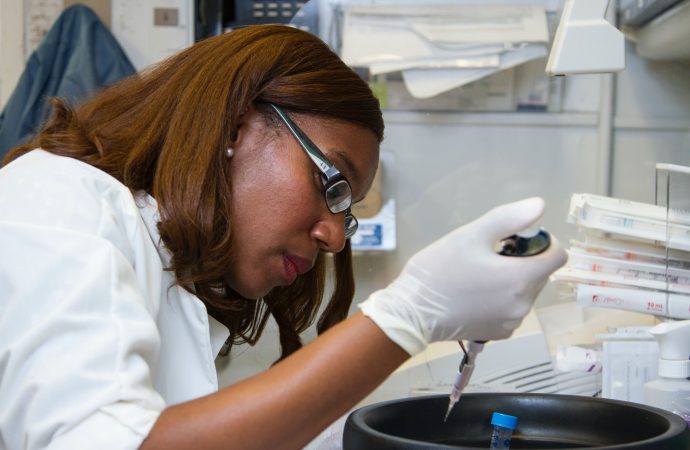Introduction: Forensic science has long been associated with solving crimes and identifying perpetrators. However, the scope of forensic science extends far beyond human investigations. Scientists are now using unique identifiers in animal DNA to revolutionize forensic techniques in wildlife crime investigations, poaching prevention, and species conservation. In this article, we explore how these breakthroughs are
Introduction:
Forensic science has long been associated with solving crimes and identifying perpetrators. However, the scope of forensic science extends far beyond human investigations. Scientists are now using unique identifiers in animal DNA to revolutionize forensic techniques in wildlife crime investigations, poaching prevention, and species conservation. In this article, we explore how these breakthroughs are transforming the field of forensic science and aiding in the protection of our planet’s precious wildlife.
1. Genetic Fingerprints:
Just as humans have unique DNA profiles, animals possess their own genetic fingerprints. Unique identifiers in animal DNA, such as microsatellites and single nucleotide polymorphisms (SNPs), serve as genetic markers that differentiate individuals within a species. By analyzing these identifiers, forensic scientists can establish accurate identification and traceability, similar to human DNA profiling.
2. Combating Wildlife Crime:
Wildlife crime, including illegal wildlife trade and poaching, poses a severe threat to biodiversity and conservation efforts. With the help of unique DNA identifiers, forensic scientists can track the origin of seized animal products, such as ivory, rhino horn, and exotic animal skins. By comparing DNA samples from confiscated items to reference samples from known populations, they can pinpoint the geographic regions or specific populations from which the illegal products originated.
3. Identifying Animal Trafficking Routes:
Understanding the routes and networks involved in wildlife trafficking is essential for combating this illicit trade. By analyzing DNA from seized animal products and comparing it to reference samples from different populations, forensic scientists can trace the movement of illegally traded animals. This information helps identify key trafficking routes, dismantle criminal networks, and enhance law enforcement efforts to protect endangered species.
4. Poaching Deterrence:
The ability to link poached animals to specific populations or geographic regions using DNA analysis acts as a powerful deterrent to potential poachers. The knowledge that animals can be traced back to their origin increases the risk for poachers and traffickers, reducing their incentives and disrupting their operations. The fear of being caught and successfully prosecuted plays a crucial role in deterring illegal wildlife activities.
5. Conservation Applications:
The use of unique DNA identifiers has significant implications for conservation biology. By analyzing the genetic diversity and population structure of endangered species, researchers can identify genetically distinct populations and determine their health status. This information is crucial for designing effective conservation strategies, identifying critical habitats, and preserving genetic diversity within threatened species.
6. Wildlife Forensics in Judicial Proceedings:
The use of DNA evidence from animal species is gaining recognition in judicial proceedings, similar to human DNA evidence. Animal DNA can provide valuable insights in cases involving wildlife crime, illegal pet trade, and animal cruelty. DNA analysis can establish links between perpetrators, victims, and crime scenes, providing crucial evidence for prosecution and ensuring justice for wildlife.
Conclusion:
The integration of unique identifiers in animal DNA analysis has revolutionized forensic science in the realm of wildlife crime investigations and species conservation. By utilizing these breakthrough techniques, forensic scientists can trace the origin of animal products, identify trafficking routes, deter poaching activities, and contribute to the protection of endangered species. The power of DNA analysis extends beyond humans, serving as a critical tool in safeguarding our planet’s biodiversity and preserving the delicate balance of our natural world.

















Leave a Comment
Your email address will not be published. Required fields are marked with *